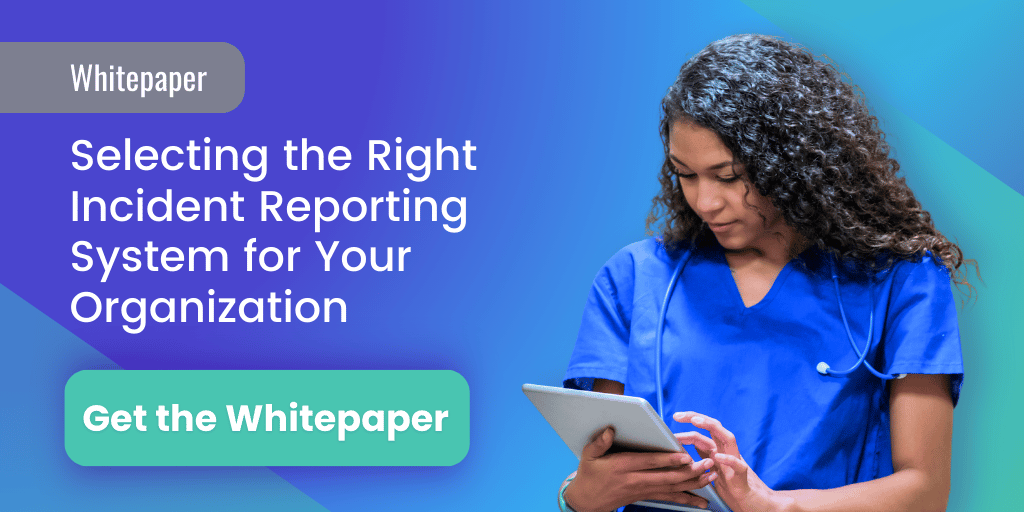3 min read
Prevent Medication Errors with Healthcare Technology
Performance Health Partners
February 24, 2023

To prevent medication errors is crucial in the evolving landscape of healthcare, as new innovations and technology may unintentionally elevate risks to both patients and staff. As a leading cause of preventable harm and injury in healthcare organizations, medication errors present severe threats to patient safety. Read on to learn how to implement safe medication practices to avert preventable medication errors.
Medication Errors and Risk Factors
The U.S. Food and Drug Administration (FDA) defines a medication error as “any preventable event that may cause or lead to inappropriate medication use or patient harm while the medication is in the control of the healthcare professional, patient, or consumer.”
It is estimated that medication errors harm 1% to 2% of all hospitalized patients and cost the U.S. healthcare system over $20 billion dollars annually.
Medication errors can increase a patient’s length of stay from 4 to 10 days. Additionally, The Institute of Medicine reports 7000 deaths in the U.S. each year due to medication discrepancies. Other harmful effects of medication errors include:
- Life-threatening situations
- Hospitalization
- Disabilities
- Birth Defects
- Death
Risk factors that may contribute to increasing the likelihood of medication errors occurring include:
- Poor communication between providers
- Poor communication between physicians and other members of the care team
- Drug names that sound alike
- Medications that look alike
- Medical abbreviations
Fortunately, organizations can prevent medication errors they take the appropriate precautions and put systems in place to prioritize patient safety. Prioritizing a system of safety management can help prevent medication errors and promote a positive patient experience within healthcare organizations.
How to Prevent Medication Errors: Strategies for Providers
1. Put Procedures in Place for Medication Administration
Reducing preventable medication errors requires the use of care coordination strategies. Most medication errors occur during the drug administration process. To prevent medication errors, healthcare practitioners are encouraged to use the “five rights” as a guide for safely delivering care: the right patient, the right drug, the right dose, the right route, and the right time.
.png?width=592&name=5Rs%20of%20medication%20error%20prevention%20(1).png)
Organizations are responsible for putting systems and procedures in place that allow for effective drug administration and reporting, while individuals are responsible for reporting any medication errors or other incidents as they become known in order to prevent further error.
Facilitating patient engagement with the care team is also a crucial element of safe drug administration. Patient safety checklists and personal medication lists are helpful for educating patients and family members on the purpose of a drug, its directions for use, side effects, and risks.
Pharmacist follow-up calls have also proven to be effective in preventing medication errors, especially when it comes to handwritten prescriptions that can be illegible or contain abbreviations. Many medications also have similar names or multiple uses, which increases the risk of error. A simple call to the prescriber to confirm a drug or dosage before it is administered can prevent adverse patient outcomes.
2. Prioritize Communication
Having clear communication among members of a care team is critically important to prevent medication errors and establish an organizational culture of safety. Often, medication errors go unreported. This can be due to lack of training on how to report an incident or event, or even because the care provider is not aware that a medication error occurred. Even if the medication error is known, many also fear losing their job or undergoing legal consequences if they report an adverse incident or event.
In order to improve patient safety, healthcare systems must promote a just culture. The goal should be to encourage open communication about patient safety concerns so that the organization can improve, rather than place blame on individuals who report occurrences.
3. Implement a Software Solution
Health information technology (HIT) is an essential tool for reducing negative patient outcomes. Utilizing a software solution for patient safety and incident reporting offers a central channel for team communication that is easily accessible to everyone. By implementing incident tracking systems, organizations can track medication errors more easily and identify trends over time.
Technology solutions are useful in pinpointing exactly where an error is occurring, allowing leadership teams to quickly formulate corrective plans for action. This allows data to be organized in ways that highlight areas of improvement while preventing future incidents like medication discrepancies before they occur.
How to Prevent Medication Errors: Patient Safety Technology
With the high cost and negative patient outcomes associated with medical error, it's incredibly important that organizations take every precaution to prevent medication errors.
With Performance Health Partner’s Incident Reporting System, healthcare organizations can access the data they need to mend fragmented care delivery systems, while improving overall patient safety.


